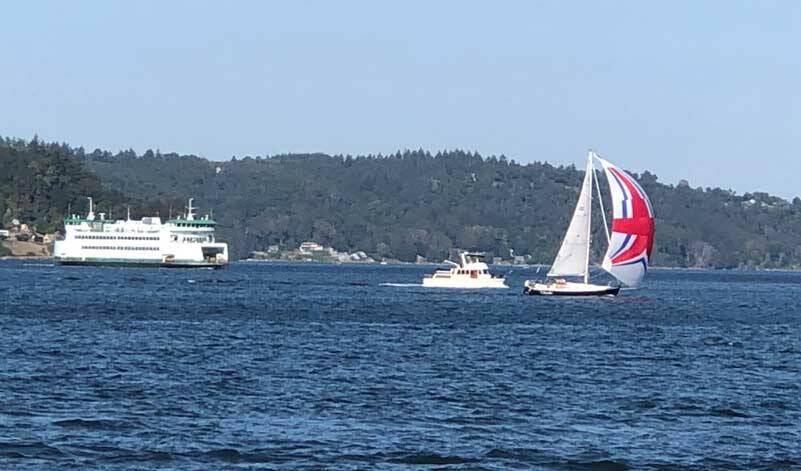By Morf Morford, Tacoma Daily Index
Most of us see parts of Puget Sound almost every day. But how many of us ever encounter the water directly?
Tacoma has multiple programs to get young people out on the water.
With many miles of waterfront access, Tacoma offers opportunities for sailing, fishing, scuba and much more.
The water, as we know, has an entirely different set of cycles, from tides to orca migrations to much more that we all, as citizens of the South Sound usually only see form a distance.
From livelihoods, to stewardship to ferries to waterfront walks, the water is, for most of us, a near constant companion. But interacting with it has not always been an option for everyone.
If you have young people in your life, or if you would like to get a bit closer to the water that surrounds our city, here are some places to begin.
Sea Scouts
For about 100 years, Sea Scouts has promoted better citizenship, boating skills water safety, and knowledge of the Tacoma area’s unique maritime heritage.
Sea Scouts offer certifications in SCUBA, boating safety, lifesaving, and CPR – among other things. You can find out more here – www.pacificharbors.org/sea-scouts.
Youth Marine Foundation (YMF)
Since 1991, YMF has operated the Tacoma Youth Marine Center to provide a campus for marine-related training and science programs for youth ages 13 and up.
The YMF campus on the Foss Waterway is the South Sound’s only youth organization with classrooms, docks and ships providing ready access to the water year round. Details and information can be found here – www.tacomaymf.org/about-ymf.
Tacoma Boat Builders
If your water related interests veer toward the more hands-on and practical (and presumably sea-worthy) you might look into Tacoma Boat Builders.
Beginning in 2012, Tacoma Boat Builders (TBB) has offered mentorships in woodworking, and traditional wooden boat building skills for under-served young people.
TBB pairs young people with skilled and practiced craftspeople to learn lasting wood-working skills. Working together, they create enduring objects of functional, pragmatic elegance.
It’s the water
Few things define our history and geography more than our waterways.
From fishing to travel to commerce and global trade, the waters around us frame and set the stage for how we interact with our neighbors near and far.
The more we know about it, and encounter it, the more these waters become a part of our everyday life and not a distant abstraction.
The sea will always be a compelling mystery to us, and somehow, the closer we look the more mysterious it becomes.
The sea looms large in our national, if not universal human identity as well.
Whether we sail or see it from a distance, wade in its waters or just read about it in book or see it on a screen, the sea has a mystery and urgency that seems to speak to us across the centuries.
From Hemingway to Melville to the Titanic, the sea and its immensity, its promise and its menace, speaks to us in ways, and at levels we can barely comprehend, but the wisest among us continue to listen.
I really don’t know why it is that all of us are so committed to the sea, except I think it’s because in addition to the fact that the sea changes, and the light changes, and ships change, it’s because we all came from the sea. And it is an interesting biological fact that all of us have in our veins the exact same percentage of salt in our blood that exists in the ocean, and, therefore, we have salt in our blood, in our sweat, in our tears. We are tied to the ocean. And when we go back to the sea – whether it is to sail or to watch it – we are going back from whence we came. – John F. Kennedy *
Big Ships
If you are interested in the background of the immense cargo ships that come and go through Commencement Bay (and beyond) you can see their schedules here.
*****
* Editor’s note: while this is a beautiful quote, in fact the percentage of salt in our blood is about 9 parts per thousand, while seawater averages around 34 parts per thousand. Learn more about ocean salinity here – https://www.britannica.com/science/seawater.





